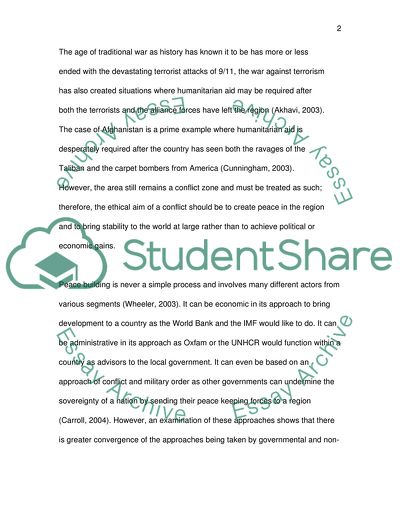Cite this document
(Peace Building Approaches of Governments Essay Example | Topics and Well Written Essays - 3500 words, n.d.)
Peace Building Approaches of Governments Essay Example | Topics and Well Written Essays - 3500 words. Retrieved from https://studentshare.org/social-science/1706367-critically-examine-the-evidence-and-implications-of-a-greater-convergence-of-peacebuilding-approaches-between-governmental-and-non-governmental-actors-involved
Peace Building Approaches of Governments Essay Example | Topics and Well Written Essays - 3500 words. Retrieved from https://studentshare.org/social-science/1706367-critically-examine-the-evidence-and-implications-of-a-greater-convergence-of-peacebuilding-approaches-between-governmental-and-non-governmental-actors-involved
(Peace Building Approaches of Governments Essay Example | Topics and Well Written Essays - 3500 Words)
Peace Building Approaches of Governments Essay Example | Topics and Well Written Essays - 3500 Words. https://studentshare.org/social-science/1706367-critically-examine-the-evidence-and-implications-of-a-greater-convergence-of-peacebuilding-approaches-between-governmental-and-non-governmental-actors-involved.
Peace Building Approaches of Governments Essay Example | Topics and Well Written Essays - 3500 Words. https://studentshare.org/social-science/1706367-critically-examine-the-evidence-and-implications-of-a-greater-convergence-of-peacebuilding-approaches-between-governmental-and-non-governmental-actors-involved.
“Peace Building Approaches of Governments Essay Example | Topics and Well Written Essays - 3500 Words”, n.d. https://studentshare.org/social-science/1706367-critically-examine-the-evidence-and-implications-of-a-greater-convergence-of-peacebuilding-approaches-between-governmental-and-non-governmental-actors-involved.


